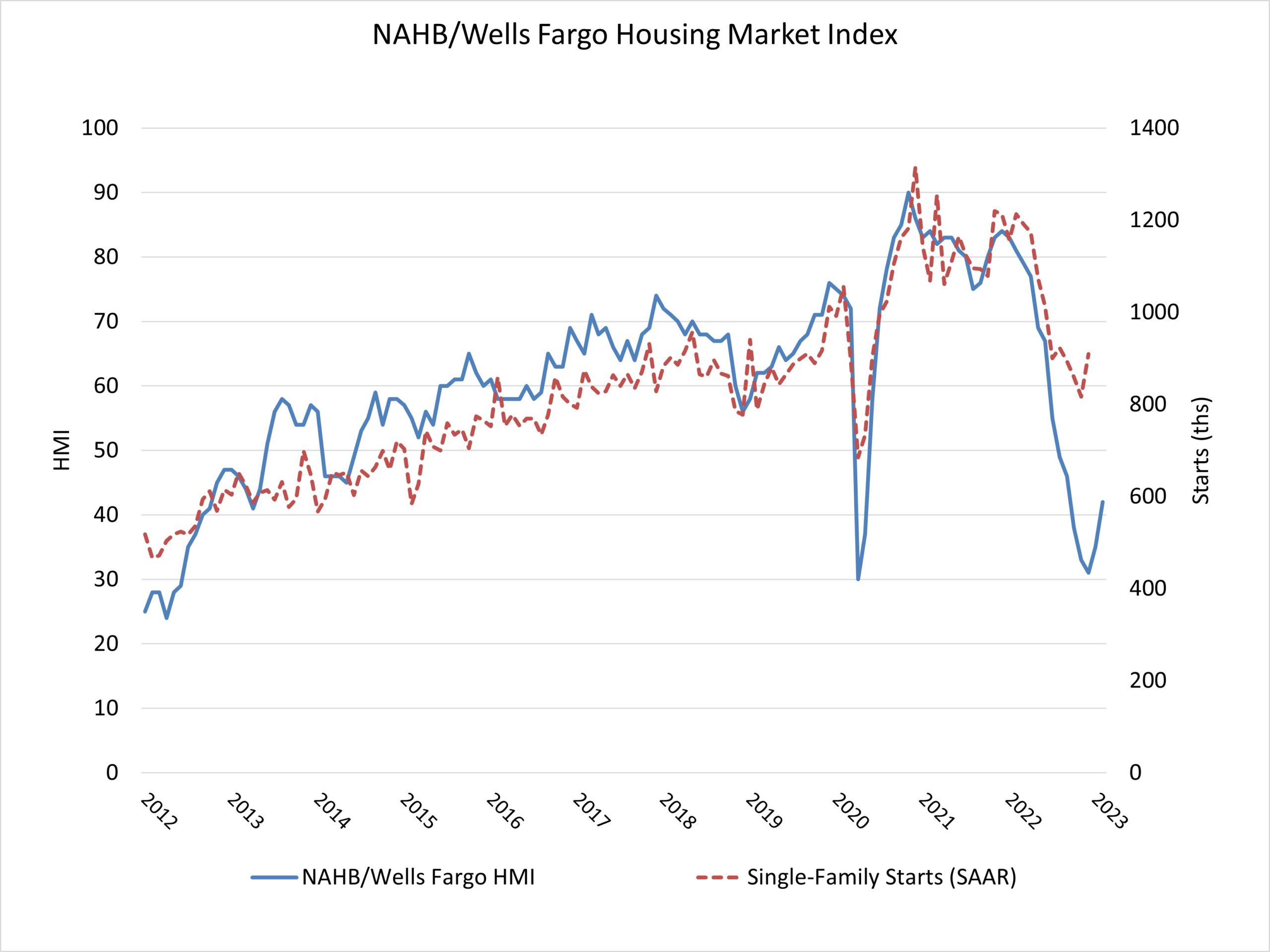Two consecutive solid monthly gains for builder confidence, spurred in part by easing mortgage rates, signal that the housing market may be turning a corner even as builders continue to contend with high construction costs and building material supply chain logjams.
Builder confidence in the market for newly built single-family homes in February rose seven points to 42, according to the National Association of Home Builders (NAHB)/Wells Fargo Housing Market Index (HMI). This is the strongest reading since September of last year.

With the largest monthly increase for builder sentiment since June 2013, the HMI indicates that incremental gains for housing affordability have the ability to price-in buyers to the market. The nation continues to face a sizeable housing shortage that can only be closed by building more affordable, attainable housing.
The average 30-year fixed rate mortgage rate peaked at 7.08% in October, according to Freddie Mac. Although rates declined to approximately 6.1% at the start of February, the 10-year Treasury rate has moved up more than 30 basis points during the past two weeks, indicating an increase for mortgage rates lies ahead.
While the HMI remains below the breakeven level of 50, the increase from 31 to 42 from December to February is a positive sign for the market. Even as the Federal Reserve continues to tighten monetary policy conditions, forecasts indicate that the housing market has passed peak mortgage rates for this cycle. And while we expect ongoing volatility for mortgage rates and housing costs, the building market should be able to achieve stability in the coming months, followed by a rebound back to trend home construction levels later in 2023 and the beginning of 2024.
While builders continue to offer a variety of incentives to attract buyers during this housing downturn, recent data indicate that the housing market is showing signs of stabilizing off a cyclical low:
- 31% of builders reduced home prices in February, down from 35% in December and 36% in November.
- The average price drop in February was 6%, down from 8% in December, and tied with 6% in November.
- 57% offered some kind of incentive in February, down from 62% in December and 59% in November.
Derived from a monthly survey that NAHB has been conducting for more than 35 years, the NAHB/Wells Fargo HMI gauges builder perceptions of current single-family home sales and sales expectations for the next six months as “good,” “fair” or “poor.” The survey also asks builders to rate traffic of prospective buyers as “high to very high,” “average” or “low to very low.” Scores for each component are then used to calculate a seasonally adjusted index where any number over 50 indicates that more builders view conditions as good than poor.
All three HMI indices posted gains for the second consecutive month. The HMI index gauging current sales conditions in February rose six points to 46, the component charting sales expectations in the next six months increased 11 points to 48 and the gauge measuring traffic of prospective buyers increased six points to 29.
Looking at the three-month moving averages for regional HMI scores, the Northeast rose four points to 37, the Midwest edged one-point higher to 33, the South increased four points to 40 and the West moved three points higher to 30.
The HMI tables can be found at nahb.org/hmi.
Related


